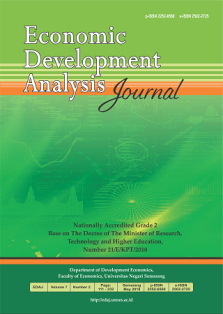Determinants of Premium and Penalty of Worker Income in Indonesia
Abstract
The worker may be paid more than the worker with whom he is associated or may receive a penalty. This study provides (1) proportion of workers into the following categories: self employed; paid workers; formal workers and informal workers, (2) determinants of segmented workers' income premiums and penalties. Using micro data from the results of the National Labor Force Survey (Sakernas) in February 2020, this study measures the proportion of workers' income and uses a multiple regression model to analyze the determinants of segmented workers' income premiums and penalties in Indonesia. Our findings show that the proportion of income premium and penalty is almost the same, when workers are divided into formal, informal and self-employed, which is predominantly occupied by workers receiving income penalties. A larger proportion of income premiums are received by paid workers or labourers. Years of schooling and the square of years of schooling show a significant effect on the income premium of self-employed and the opposite results on the income penalty. The same thing was found in formal workers. Age, age squared, gender, area of residence show a significant effect on the income penalty of self-employed and income premium of formal workers.


